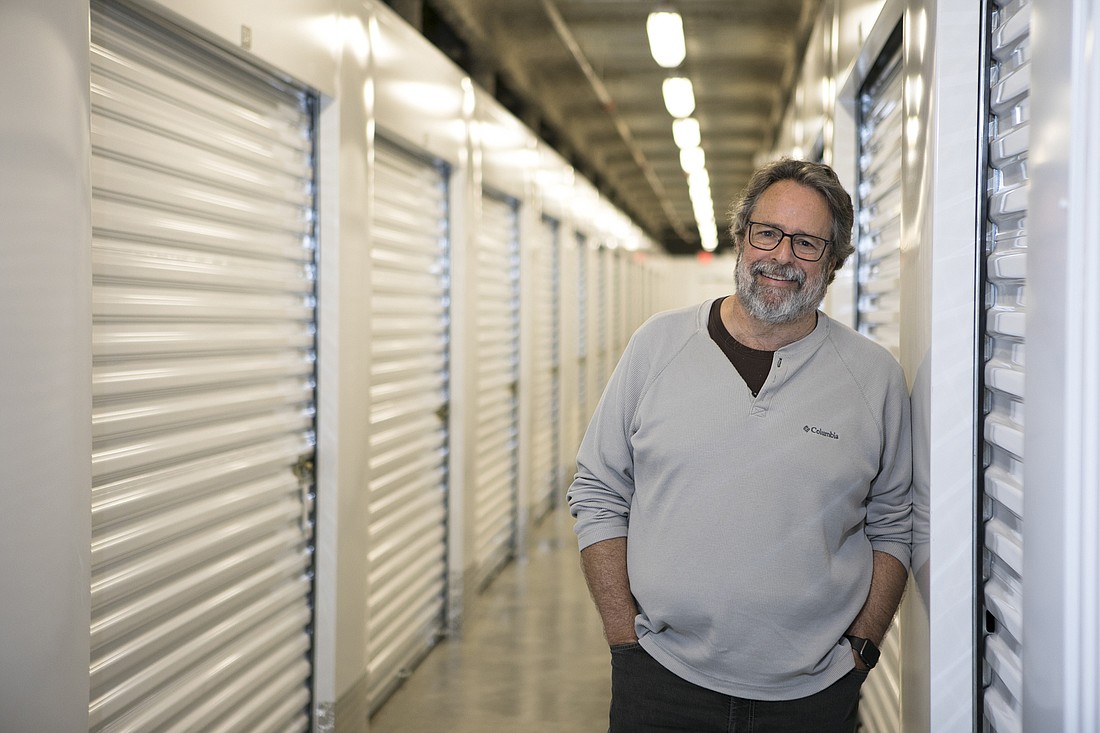- November 24, 2024
-
-
Loading

Loading

St. Petersburg is Craig Sher’s favorite city to both live and do business in, and despite being a generation or two removed from the area’s surging millennial demographic, the veteran property development investor likes what he sees going around him in the Sunshine City.
So much so that Sher, 64, is one of the investors in a large new storage facility on the western edge of downtown St. Pete. He says storage isn’t the most attention-grabbing amenity — but it’s an essential service in a rapidly evolving city like St. Pete, which is attracting millennial workers in droves and, spurred by new condo and apartment buildings, experiencing a westward expansion of its downtown core into what’s known as the Edge District, near Tropicana Field.
“People are much more transient now,” he says. “I have three daughters in their 30s and two of them change jobs pretty frequently, and they can also change locations frequently. They’re going to rent and not obligate themselves to buying something. So they need things like storage facilities, pending a move to someplace bigger.”
Tampa-based Osprey Capital Partners — in which Sher, executive chairman of the Sembler Co., is among one of several prominent area investors — teamed up with Orlando-based Liberty Property Investments to bring the four-story, 92,000-square-foot facility, at 1501 2nd Ave. N. and managed by Extra Space Storage, to fruition. The investors would not disclose the budget of the project, which was built by Marietta, Ga.-based contractor JM Williams and slated to open April 3. They paid $1.2 million for the land in October 2016, according to public records.
“It’s definitely on the riskier side of commercial real estate. You don’t have credit leases and big-tenant leases, so one of the challenges is just filling it up.” — Craig Sher
Other investors include Doug Bray, a St. Pete-based member of Osprey Capital's investment committee, and real estate attorney Will Conroy, a 2016 Business Observer 40 under 40 winner who recently developed The Salvador, a luxury condominium high rise in downtown St. Pete. The deep pockets backing the project are evident in its features: the fully climate-controlled facility boasts a covered, 230-foot-long drive-through pickup and drop-off area; elevator access; on-site manager; 24-hour video surveillance and electronic gate access.
Sher says the facility represents “a multimillion-dollar investment in an area that’s emerging and changing. The neighborhood used to have a fairly industrial feel. But now St. Pete is redeveloping in all directions and this helps that whole area around the Trop, which will be the next big area to redevelop. You can just feel it coming through the Edge District.”
To hear Sher tell it, there was never any debate about what to do with the land after it was acquired. “We had already come up with the concept [of building a self-storage facility],” he says. “We found the land rather than the land finding us.”
Sher, also acknowledges having some worries about putting so much capital into a storage facility.
“It’s definitely on the riskier side of commercial real estate,” he says. “You don’t have credit leases and big-tenant leases, so one of the challenges is just filling it up. Also, you have competitive pressures from competitors you might not even know about who are coming in after you.”
The need for downtown storage isn’t just about millennials. With the greater St. Pete metro area mostly built out, the only direction for new residential construction to go is up, and that means units are shrinking. And with commercial real estate rents going up, business owners who want a piece of the downtown action must often settle for less space and might require easily accessible storage.
“Also, retirees are increasingly moving downtown,” Sher says. “They’re coming in by the hundreds, perhaps thousands, and there’s very limited storage within the units [where they’re living].”
Other factors, says Sher, include lack of parking and cities’ reluctance to give up precious downtown real estate for the sake of parking garages. Millennials and seniors don’t drive as much as other demographics, so re-urbanizing cities like St. Pete would rather see greater downtown residential density and higher walkability scores. That means apartment and condo units are getting smaller — to accommodate more residents per building — and being offered with little in the way of parking.
“Years ago, cities would want you to build two parking spaces per unit in a parking garage,” he says, “and now because cities don’t want to load their downtowns with parking, you’re seeing less and less parking downtown, and not just St. Pete, any downtown.”